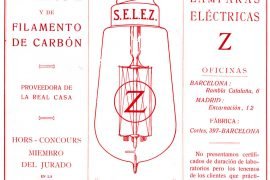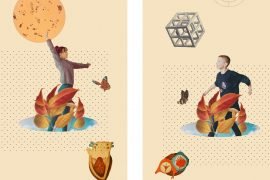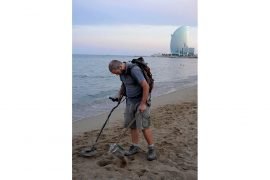[dropcap letter=”T”]
he smell of the sea given off by Baiona remains unaltered since the times of the discovery of America. The summer mornings are often shrouded in mist over the bay but, as the day draws on, the impressive skyline of the Cíes Isles looms on the horizon. Although it is in this protected natural paradise where the British paper The Guardian found the best beach in the world –Praia das Rodas– its nice sandy beaches are within walking distance from the city centre. Baiona has four kilometres of seaside of six different idiosyncrasies: A Concheira and Os Frades are coves of cool-battered water looking over the Atlantic Ocean; Barbeira and A Ribeira, sheltered by the peninsula of Monte Boi, are their opposite version; Santa Marta is a quiet family beach of shellfish tradition, and Ladeira, the longest of them all, offers dunes and quiet water sheltered by the bay from currents and winds.

Summers in Baiona are mild and smell of salt. Its landscapes change several times a day thanks to the magic brought by tides. Here, fishing boats awake floating on a water mirror, get bogged down on sand banks at midday and go back sailing at tea time without even budging an inch from where they were. It is a real pleasure to cross on foot or by bicycle the six-kilometre-long the seafront promenade from Monterreal to La Foz any time of day: by the sea, on the wetlands, it is easy to feel the wind keeping pace with the ebbs and flows of the sea and notice how the light changes with the sea reflections.
SEA SOUL, STONE BODY
The old town of Baiona is a small labyrinth of stone and granite. Its low-rise buildings make up narrow streets, often with porches, endowed with the ability of changing their attributes depending on the weather. Shiny when it rains, cool and shadowy under the sunrays, silent and sheltered in stormy and windy days, loud and happy in the warm summer nights. On the port façade, the big windows of the old maritime houses sweep through the horizon while, underneath, trade and commerce knows no rest until the summer comes to an end.
At midday or at dusk, the Baionaises meet on the terraces of the Rúa do Reloxo and spoil themselves with a snack before lunch or dinner. Food is a frequently-practised sport behind the stone walls of the old town, but also in hidden locations on the hills or looking into the sea. La Galería, Porto dos Barcos, Fonte de Zeta or Casa Rita are some of the many examples of styles and budgets sharing a common target: the quality of its many varieties of fish and shellfish. There is no need to fall back on complicated recipes to enjoy an excellent cuisine. A portion of empanada de xoubas, octopus a feira, griddled zamburiñas or coruxo in the oven can be simple yet memorable dishes. When it comes to deserts, the handmade ice-cream parlour Bico de Xeado (in Galician, “ice-cream Kiss”, but it sounds like “beso deseado” or “desired kiss”) is the unavoidable midsummer site of pilgrimage to end a good meal.

THE HILL AND THE SEASIDE, FACE TO FACE
Green hills of pine tree and eucalyptus is the picturesque framework of this maritime landscape. By the sea, on its homonymous peninsula, looms impressively Monte Boi: a forty-metre-high mound, settled by the Celts, Phoenicians and Romans in the past. On its top, the profile of the medieval fortress of Monterreal –former residence of Count Gondomar and, currently, Parador Nacional–, and all around it, a pleasant walk with impressive vistas of the sea and the village.
On the shore, the land rises to one hundred metres, thus chiselling Monte Sansón, the throne of the Virgin of the Rock. Although this granite-rock fifteen-metre-high statue holds a ship-shaped lookout in its hand, no view compares to the one offered by the natural viewpoint of O Cortelliño (648 metres), on top of Monte A Groba. Climbing to the highest point in town is rewarded with a view of the profile of Rías Baixas and the pleasure of enjoying the luxuriance of woods where one could easily bump into a herd of wild horses grazing on a mountain slope.
WHERE EUROPE DISCOVERED AMERICA
Green hilly background, granite-stone streets and a quiet bay peppered with many-coloured fishing boats: this is the first image of dry land seen by the sailors from La Pinta, one of the three Spanish ships sent on the discovery of America, after months crossing water ranges in the Atlantic Ocean. A sea storm separated them from the rest of the Columbus’ expedition but the skills of its captain, Martín Alonso Pinzón, succeeded in leading them into dry land four years before Christopher Columbus reached Lisbon. That was on 1 March 1493 and the incredible stories about the New World quickly spread along the narrow streets of this maritime village before the Catholic Kings received the news. Nowadays, Baiona travels in time every 1st of May to celebrate such an important date and commemorate the fact that this small maritime town was the first place in the world where Europe discovered America.



















